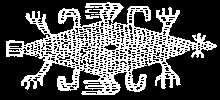Myten om Mau-lelo Bui-lelo handlar om uppkomsten av Mambae-folket på Timor. Sådana myter har stor betydelse för timoresernas historia och kultur. Ros Dunlop har skrivit en introduktion om den här myten och två filmer om den.
Här nedan återger vi hela notisen med dess länkar till två filmer.
Tommy Pollák
A ritual performance of the myth of Mau-lelo Bui-lelo
Available to view in the links below this message
I would like to share with ETAN two films about an origin myth of the Mambae people of East Timor. Stories such as this one of Mau-lelo Bui-lelo are an important of the history and culture of the East Timorese, the links to the films are below. One film explains the signicance of this tale as a lynch pin to the creation of a civil society and the other is the full performance of that ritual. Below is some background on how this came about and a summary of the tale. I came across this story as part of the many years spent recording the traditional music of East Timor.
I first went to the Mambae village of Mulo in 2007 and after spending several days recording their traditional music I sat down with elders Afonso Pereira and Fausto Mendonça to discuss the performances that had been recorded. Afonso told me about an ancient story from the ancestors a multimedia drama they call Mau-Lelo Bui-Lelo. It was not possible to record it at that time because a performance of this drama would involve considerable preparation. At that time I was told that Mau-Lelo Bui-Lelo was the story of war between Bui-Lelo (a Queen) and Mau-Lelo (a King). Later in Portuguese times these characters became God and the devil, (likely suggesting the influence of Christianity on an older story). The content of the drama was not elaborated upon but good and evil were the underlying themes. I asked if enough notice was given would they do a performance of Mau-Lelo Bui-Lelo. The answer was in the affirmative. Seven years later in January 2014, I went back in Mulo and met up with Afonso Pereira now a man in his 80s, to give him a copy of my book Lian husi klamar: Sounds of the soul. He was delighted to receive it, and when we again discussed the possibilities of him organising a performance of the Mau-Lelo Bui-Lelo he was enthusiastic and keen for a permanent record of it to be made and so plans were made. He said that only he and another elder Fausto Mendonça knew how to do the Mau-Lelo Bui-Lelo, and that they would need time to teach all those who would be involved. Afonso indicated that to properly perform it would require more than one hundred people and agreed a performance of Mau-Lelo Bui-Lelo could take place six months later. When we finally recorded it in June 2014, we discovered the story of Mau-Lelo Bui-Lelo to be a lot different from the brief version I had originally been told. The Mau-Lelo Bui-Lelo as it unfolded, is a tale of significance. It is an allegory which represents the transition between two worlds: from a world which was “dark”, that is, a time of no uma lulik, with no rules or regulations; to a world that was “light”, that is, the beginning of the period of uma lulik, together with lulik with its rules and regulations, and to the creation of a civil society.
Below is the version of the story of Mau-Lelo Bui-Lelo as told by Afonso Pereira to me in 2014:
In the beginning, when the world was dark there lived a brother, Mau-Lelo and his sister, Bui-Lelo in a place called Bleheto Blelela. They were Don Tasi’s children. One day Bui-Lelo was washing her hair in Beto Hatumeta. Strands of her hair stretched from Beto Hatumeta to the sea. Once it reached the sea Mau-Lelo appeared and he held on to the strands of Bui-Lelo’s hair while he seduced her. They bore a son named Absah. When Absah grew up he asked his mother who his father was. His mother didn’t reply. Absah knew that there were not many other men in the world then so he concluded that his father must be his mother’s brother and that his father had committed a crime of incest. Absah felt betrayed and knew he must right the wrong of his father and kill him. After Absah killed Mau-Lelo his remains were spread out everywhere, some were sent to clan leaders from the bottom to the tops of the mountains, and to the sea, for all to know that the law regarding incest was to be decreed. Killing Mau-Lelo righted the wrong he had committed and signifies that we should respect each other; for example, uncles respect nieces, nephews respect aunties, brothers respect sisters. When Mau-Lelo was killed the light took its rightful place as did the darkness. (interview, June 15, 2014)
The link to the film explaining Mau-lelo Bui-lelo is : https://vimeo.com/144436216.
The link to the full performance of Mau-lelo Bui-lelo is: https://vimeo.com/user43961031.
Ros Dunlop, Director
Tekee Media Inc
17 Callan St, Rozelle NSW 2039, Australia
tel +61 2 9810 2253, mobil +61418802757
Web www.tekeemedia.com

